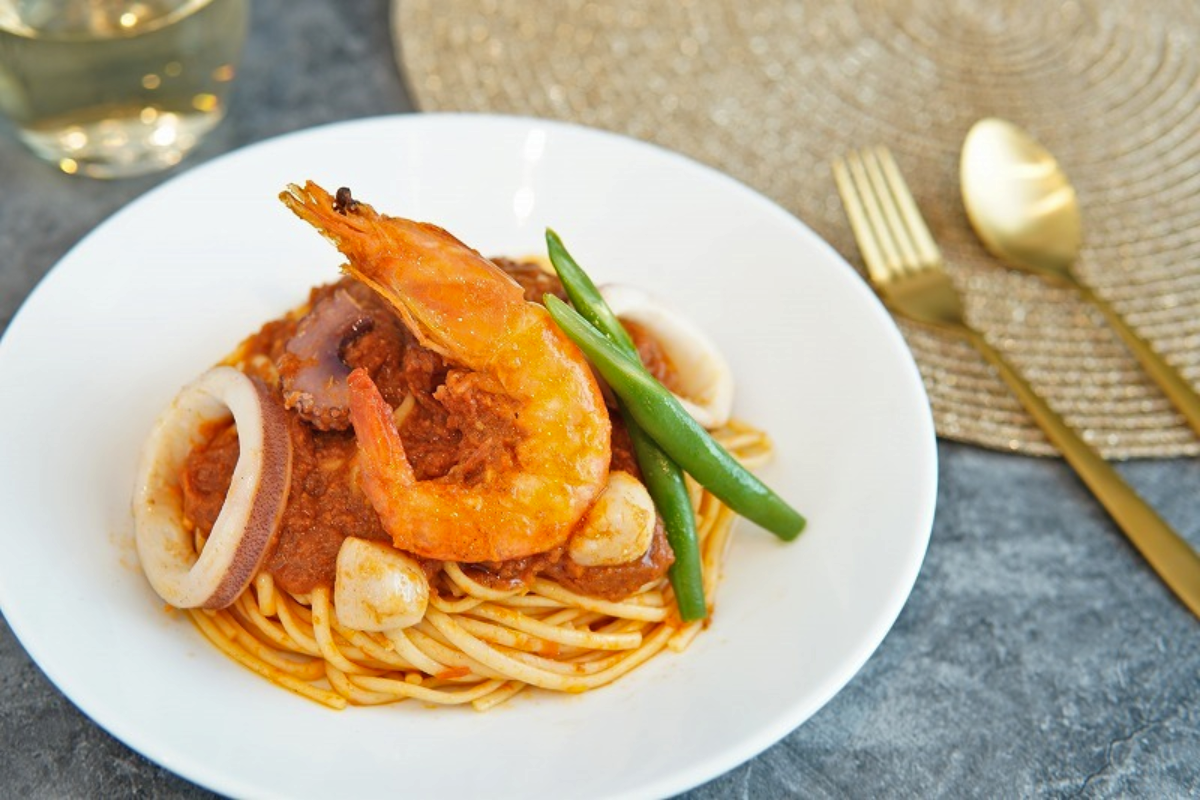One of the pleasures and challenges of traveling is eating foods outside your comfort zone. Often that begins when you step onboard an airline, particularly if that airline isn’t from your home country. What’s to eat can take on a whole new meaning. Japan’s ZIPAIR promises to challenge some hungry flyers from far afield with a little something extra on what otherwise look’s like pretty conventional lunch fare.
A burger with crickets for lunch?
Introduced in late June and picked up by Japanese news outlet Asahi Shimbun on the weekend, ZIPAIR now lets passengers pre-order meals that incorporate insect powder, specifically powder made from two-spotted crickets. Fried crickets have long been a popular and nutritious street food option in parts of Asia, albeit a sometimes unconventional choice for travelers more accustomed to trail mix.
Food scientists have put a lot of work into the possibilities of insects as food staples as the world becomes increasingly crowded, and the environmental and ethical concerns of large-scale livestock production become increasingly controversial. The well-known nutritional value of insects is a bonus. ZIPAIR is styling its two new cricket-fueled meal options as an environmentally friendly meal option.
ZIPAIR offers a more environmentally sustainable burger & pasta option
So what’s for lunch on your next ZIPAIR flight? The two meals containing ground cricket powder (or gryllus powder) are the chili burger topped with tomato and pasta pescatore. ZIPAIR says gryllus powder is included in the buns, patty, and the spicy flavored tomato sauce of the burger, and in the pasta option, the soft-shell shrimp, octopus, squid, and clams are cooked in a tomato-based sauce with gryllus powder.
“As part of ZIPAIR’s commitment to sustainability, the airline has partnered with Gryllus Inc. to offer an environmentally friendly meal option to help reduce food waste on its international network,” says a ZIPAIR statement. “Starting July 1, 2022, the carrier will offer customers the option to purchase special meals rich in protein, including a chili burger topped with tomato or a pasta pescatore plate developed in collaboration with Gryllus. The ingredients in both meals feature a protein-rich edible insect in powder form, gryllus bimaculatus. By consuming an alternative source rich in protein, these actions can positively impact climate change.”
ZIPAIR is a low-cost subsidiary of Japan Airlines. As with most low-cost airlines, ZIPAIR doesn’t just hand out these meals. You have to order and pay for them before flying. The meals are available on flights between Tokyo Narita (NRT) and Bangkok (BKK), Singapore (SIN), Honolulu (HNL), and Los Angeles (LAX). In the case of the two US destinations, ZIPAIR notes the meal options will only be available on flights to those destinations.
The seafood pasta onboard ZIPAIR (pictured) comes with added cricket powder. Photo: ZIPAIR
ZIPAIR tries to walk the sustainability talk
One ZIPAIR official told Asahi Shimbun that the cricket powder has “an appetizing flavor resembling that of shells of crustaceans.” As someone who reckons the best part of a prawn is its shelly tail, I’m fully onboard with that flavor.
It’s easy to say a practice is environmentally sustainable, but talk is often cheap. But ZIPAIR says they are trying to walk the talk. Requiring customers to pre-order meals cuts down waste (and saves the airline money) – so no arguments there. But the two meal options still include beef and seafood. There is a whole raft of environmental issues surrounding livestock production and fishing, so an entirely insect-based meal option could be a better choice from an environmental perspective. However, that might be a step too far too soon for ZIPAIR customers.
As ZIPAIR notes, they are not trying to change the world or eating habits overnight. Instead, the airline is interested in reducing food waste and promoting the consumption of alternative protein sources. A year or two down the track, it will be interesting to know what the uptake of the new meal choices has been like.
Source: Asahi Shimbun




